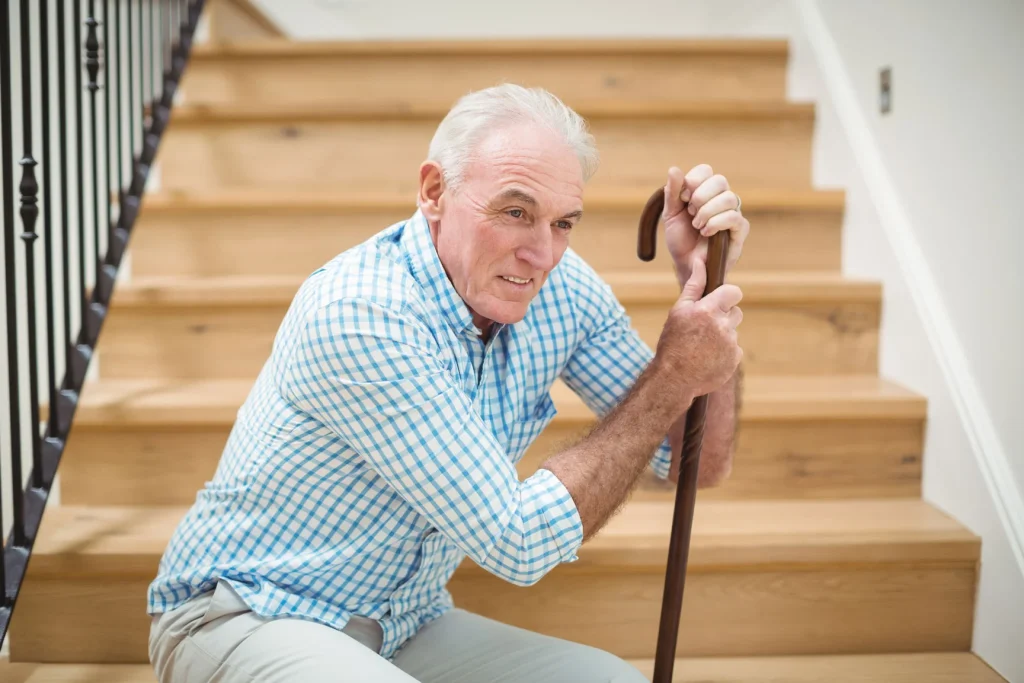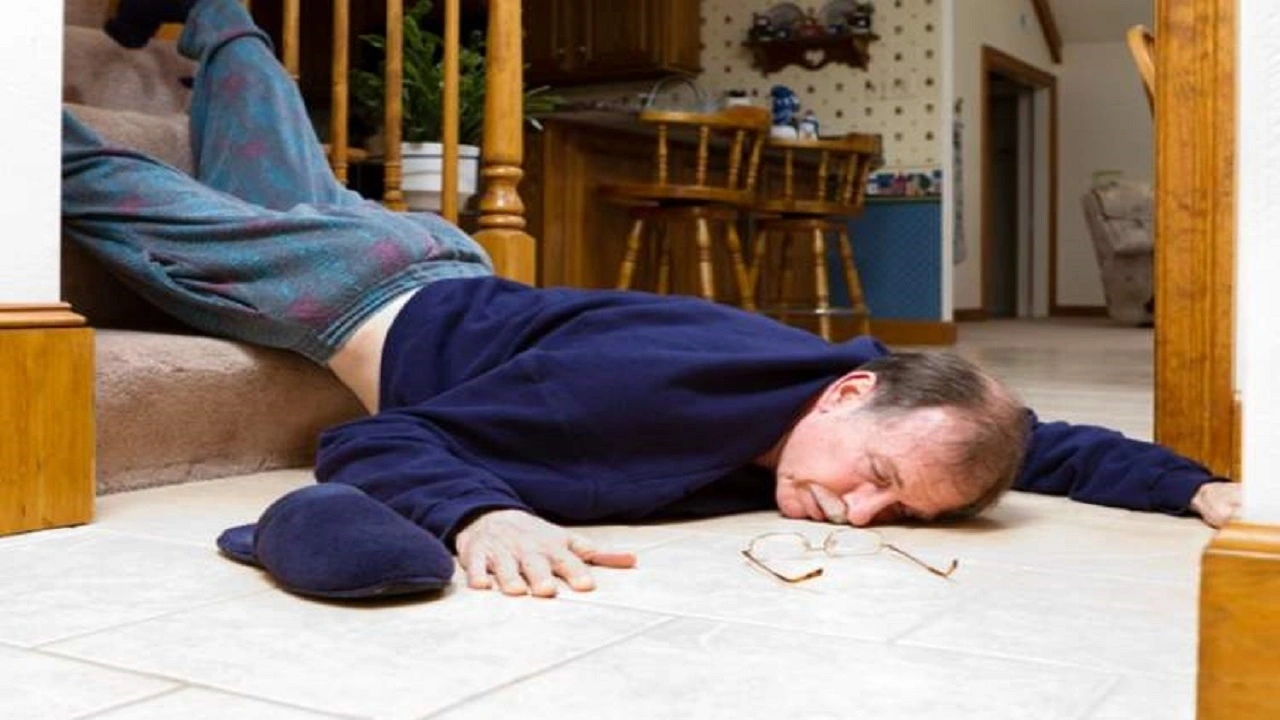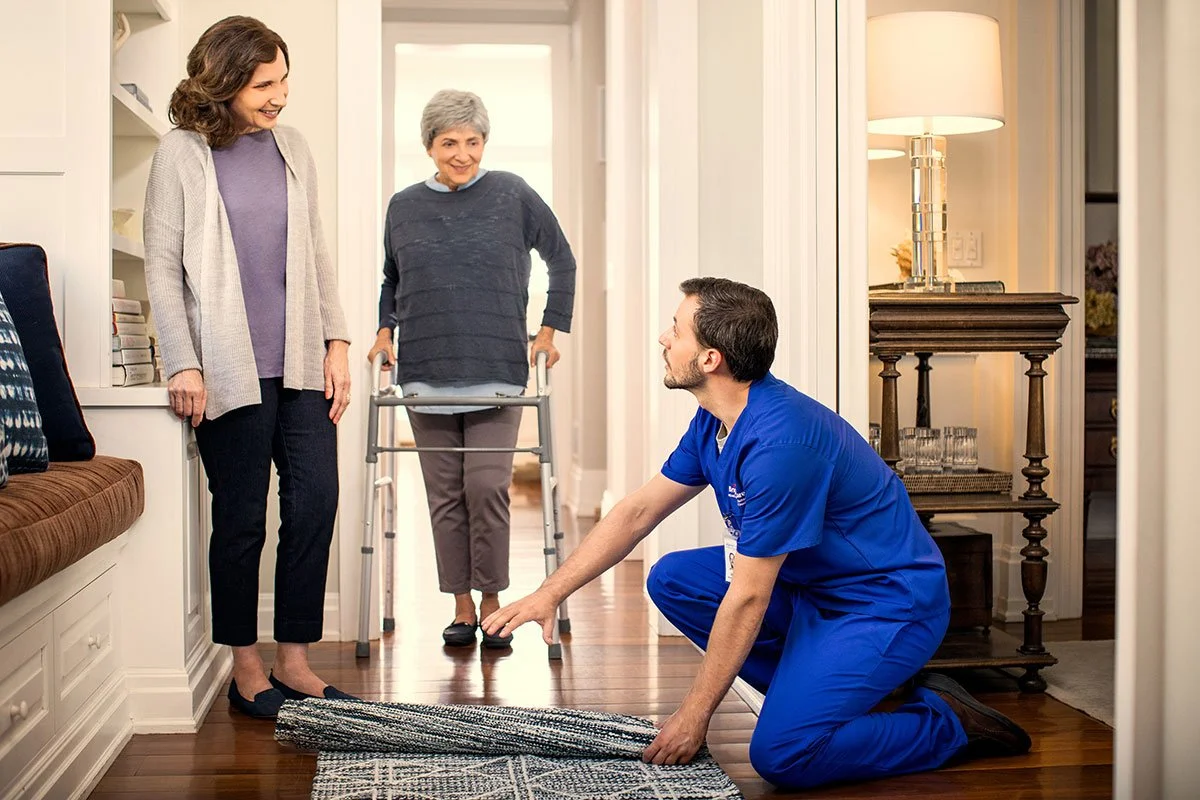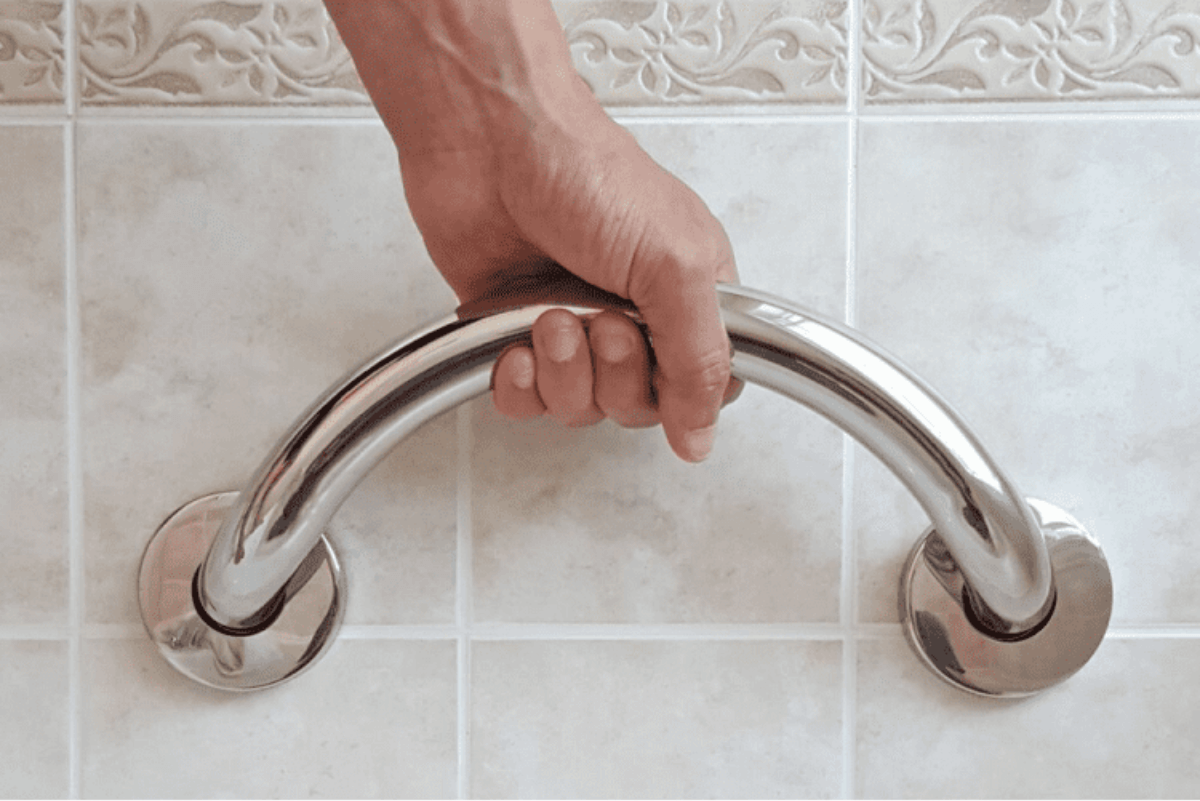
17 Practical Tips for Home Safety for Elderly
How to keep the elderly safe at home? How to safe our home for seniors? Ensuring home safety for elderly is a very important aspect of elderly care services, and neglecting it can lead to serious problems for seniors. As people age, changes in the interior space of their homes are necessary to provide a high-quality living environment for those who play an important role in our lives.
One of the first steps to achieving a quality life for them is to reduce unnecessary items in the house to some extent. This not only declutters the environment but also prevents potential incidents caused by bumping into decorative items or furniture. In this guide to home safety for seniors from the humanhealthmag website, we will explore 17 ideas for the ideal home decoration for seniors and home safety for the elderly fall prevention.
Safety in the Home for Elderly
Given the physical conditions and mobility limitations of seniors, making the home safe is very important. The main aspects that should be considered for ensuring the safety of the elderly environment include reducing the risk of falls, preventing fires, and avoiding poisoning. For example, the following points can be implemented in this regard:
- Safety in hallways, bathrooms, and toilets by installing railings and grab bars in these areas
- Using non-slip flooring
- Repairing stairs
- Installing smoke detectors
- Using standard electrical appliances
- Educating on the proper use of appliances
- Proper storage of medications
- Labeling food items
- Appropriate lighting

17 Home Safety Tips for Older Adults
Assist elderly with daily living activities and creating a safe and comfortable environment for seniors at home is crucial for improving their quality of life and preventing accidents and physical problems. In addition to ensuring safety, this also brings peace of mind and easy access to their necessary items, ultimately contributing to their increased independence and self-sufficiency.
The reasons for needing such an environment include the physical changes that occur in seniors, decreased abilities, and an increased risk of falls. Therefore, preparing a home for seniors requires attention to several different aspects in terms of safety, comfort, and well-being to provide them with a safe and comfortable environment.
How to create a safe and secure environment for senior living? Most important household safety checklist for senior citizens are:
1) Suitable Location for a Safe Senior Home
In the first step of home safety for the elderly, the place where they want to live is best on the ground floor. This is because it is easier for them to move around. This principle is very important because in case of a problem, exiting the place is easier.
Note: If it is not possible for their living space to be on the ground floor, you can use electric chairs that can be installed on the stairs.
2) Lighting for Senior Home Safety
As people age, their vision decreases. To prevent collisions with objects and improve their visual quality, pay attention to standard home lighting. For this, use indirect lighting in appropriate places. Pay more attention to lighting areas that require more light:
- Kitchen
- Bathroom and toilet
For added security, you can install flashlights in different parts of the house so that they can be quickly accessed in case of a power outage.
3) Home Safety for Elderly: Kitchen
Considering the difficulty of kitchen tasks due to the lower physical abilities of seniors, the interior space of the kitchen should be designed according to standards:
- Appropriate height for cabinets, handles, and easy-to-open doors
- Choosing a suitable floor to prevent slipping
- Placement of tools and appliances within easy reach
4) Bathroom and Toilet Safety
The slipperiness of these environments can create many hazards for a person. For this, use special non-slip pads in the bathroom. Also, the shower height should be adjustable manually. For the toilet, prioritize installing a Western-style toilet. It is better to install grab bars for the user’s comfort to help with sitting and standing.
5) Living Room Decoration
Plants, lighting, and creating a suitable atmosphere in the living room create a vibrant environment for seniors. These environments can play a fundamental role in the mood of seniors. Use attractive colors to help with this. Be sure to get their input and taste in the arrangement and decoration of the environment to create a suitable and pleasant space for them.
6) Using Potted Flowers and Plants
Seniors are happy to have potted flowers and plants. Connecting with flowers and plants can create a good mood in them. If there is a yard or green space in the senior’s home, maintaining it and even walking in that space can fill their spirits with hope and happiness. If they do not have such conditions, entrust them with the care of houseplants and see how lovingly they do it.
7) Home Safety for Elderly: Suitable Flooring
Avoid using hard flooring such as stone or laminate. If seniors fall due to mobility problems, it can cause serious problems and injuries for them. Consider flooring such as carpets for all interior spaces of the senior’s home to ensure their safety.
8) Suitable Furniture for Senior Home Safety
Furniture with rounded corners is suitable. Furniture with sharp, right-angled corners can scratch the fragile and delicate health of seniors. Another important point for home safety equipment for elderly and suitable furniture for seniors is having armrests. These armrests help them sit down and stand up more easily.

9) Clutter-Free Decoration
If your elderly loved ones use a walker or cane to walk, a clutter-free interior decoration of their home is especially important. The house should be arranged in a way that creates a comfortable space for their movement. For example:
- The distance between furniture should be greater than usual.
- Communication paths should have the fewest pieces of furniture.
10) Using Glass for Home Safety for Elderly
Remove glass from furniture, especially coffee tables and side tables. All-wood tables or tables with fabric coverings are more suitable options.
Note: Seniors, like children, are vulnerable and need care and support.
11) Favorite Entrances for Seniors
Be sure to place a dedicated closet for seniors at the entrance of the house so they can take their hat, keys, cane, or anything else they need when going out. Place a comfortable chair at the entrance of the house so they can put on their shoes more easily.
12) Smart Homes, Suitable for Seniors
A smart home can give you peace of mind and help you take better care of your elderly loved ones. The simplest example is installing an alarm bell in the seniors’ bedroom. This allows them to inform you of their condition as quickly as possible.
13) Senior Home Safety: Arrangement of Household Items
Extra items should not be around the senior. Run television and refrigerator cords along the corner of the house so they don’t trip over them and the path is clear. Essential items that the senior needs should not be placed on the upper shelves of cabinets because they will have difficulty reaching them.
14) Master Bedroom
These rooms have a private bathroom, which is better for seniors. If the senior’s home does not have a master bedroom, choose the bedroom that is closest to the bathroom for them.
15) Decorate the Seniors’ Bedroom According to Their Taste
Get their input on the layout, furniture selection, and accessories for the seniors’ room. Do not change the location of anything without their permission, and involve them in the decision-making process. An item that seems old and worn out to you may be full of good memories for them. So, be sure to prioritize consulting with them.
16) Ventilation of Seniors’ Bedroom
Ventilation of the seniors’ bedroom is one of the most important points to consider. Accordingly, the following is recommended:
- Having a window that opens and closes easily
- Using an air purifier or air freshener
17) Suitable Curtains for Ensuring the Safety of Seniors’ Bedroom
The curtains chosen for the seniors’ bedroom are best made of two layers, thick and thin. This allows them to adjust the room’s light according to their mood.

Creating a Suitable Social and Psychological Environment for the Elderly
Creating a suitable social and psychological environment for elderly can lead to a cheerful spirit and, consequently, improve their quality of life. Some strategies for creating such an environment and safety tips for seniors living alone include the following:
- Home Decorations: Home decorations for seniors should not only be beautiful but also provide safety and comfort. Using family photos is beneficial for improving the mood of seniors. Additionally, using plants can help improve air quality and create a sense of calm in the home. Choosing plants that require less care is more suitable. Besides these, other decorative items that seniors like can also be used.
- Creating Communication Space: This can be done by dedicating a place for conversation and spending time with family members. Building strong connections with family members can help seniors avoid feeling lonely and receive emotional support.
- Encouraging Favorite Activities: Providing the necessary facilities for participating in enjoyable recreational activities such as light exercise, art, and music can help improve the mood and reduce stress in seniors. Do you know how to prevent falls during exercise for seniors?
Beyond the elderly, caregivers also need to take care of themselves. Paying attention to their mental health is very important, and there are several reasons for this importance:
- Preventing Caregiver Burnout in Elderly Care: Caring for the elderly can be very stressful and tiring. If caregivers do not pay attention to their mental health and respite care for elderly, they may experience burnout, which can lead to a decrease in the quality of care for the elderly.
- Maintaining Quality of Care: Caregivers with good mental health can assist the elderly with more energy and motivation. This also helps improve the quality of life for the elderly.
- Managing Stress: Caring for the elderly can come with many challenges. Caregivers with good mental health can better cope with daily stresses and pressures and prevent the development of psychological problems.
- Preventing Physical Problems: Poor mental health can lead to physical problems such as high blood pressure, heart problems, and sleep disorders. Paying attention to mental health can help prevent these issues.
Concluding Remarks
The type of living environment for the elderly differs from others due to their sensitive and special physical and mental conditions. This article highlighted important points regarding creating a safe and comfortable environment for seniors at home. All important aspects, including comfort and ease, safety, helping the senior’s independence, and maintaining the senior’s physical and mental health, as well as the role of caregivers, were examined.
In addition to creating home safety for the elderly, encouraging them to engage in social and physical activities is also important for maintaining their physical and mental well-being. Remember that the needs of each senior are unique. If you encounter new problems and challenges and are unsure how to deal with them, it is necessary to find a way to solve the problem. The necessary tools to resolve the issue are available to help everyone. If you feel you need help, hire someone who can assist you in resolving the problem.

Frequently Asked Questions
Why is home safety so important for the elderly?
As people age, they may experience changes in mobility, vision, and balance, increasing their risk of falls and injuries at home.
What are some key areas to focus on for home safety?
Focus on preventing falls (flooring, stairs, lighting), bathroom safety (grab bars, non-slip mats), and kitchen safety (accessible items, clear pathways).
What’s a simple way to improve lighting for an elderly person?
Use brighter bulbs, add nightlights in hallways and bathrooms, and ensure good task lighting in areas like the kitchen and reading spots.
How can furniture be made safer for seniors?
Choose furniture with rounded edges, ensure it’s stable, and consider pieces with armrests to aid sitting and standing. Keep pathways clear of clutter.
What’s a good first step in making a home safer for an elderly?
Conduct a walk-through of the home to identify potential hazards and areas for improvement from their perspective.
